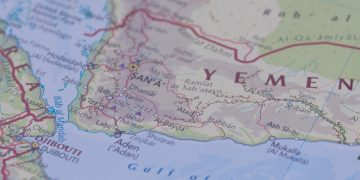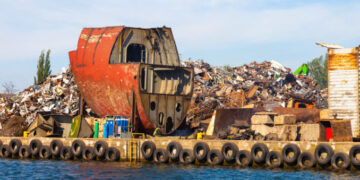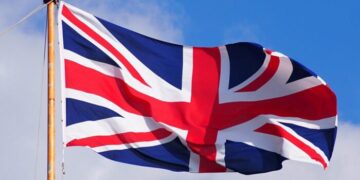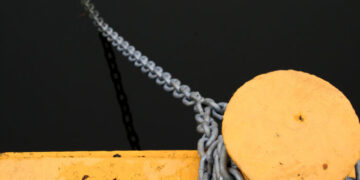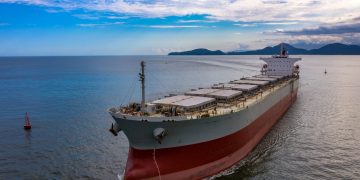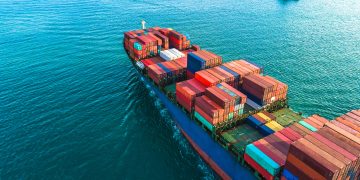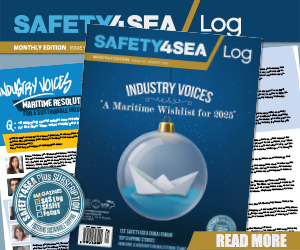The MV Ruby, a ship carrying 20,000 tonnes of potentially explosive ammonium nitrate, arrived at Great Yarmouth port after being damaged in storms, BBC reports.
The ship’s arrival sparked significant concerns from local authorities, including Norfolk County Council and Great Yarmouth Borough Council. They described the decision to allow the ship into the port as “unacceptable,” citing the potential risk of a major explosion that could affect residents and businesses across the area. The councils urged the government to stop the vessel’s return.
The Department for Transport responded by defending the decision. A government spokesperson explained that the ship’s return followed all safety protocols, and the vessel and its cargo met safety standards.
The operation was carried out with advice from the Maritime Coastguard Authority and the Health & Safety Executive. The spokesperson also clarified that the decision to allow the MV Ruby back into Great Yarmouth was a commercial one, made between the ship operator and the port.
Norfolk County Council also claimed MV Ruby had left the port to discharge some contaminated fertiliser at sea. A government spokesperson added that ammonium nitrate is not a persistent chemical, and with sufficient dilution, it will dissipate without leaving a trace.
Port director Richard Goffin emphasized that handling ammonium nitrate fertiliser is routine at ports across the UK and that the port had simply provided a safe haven for the ship, which was in distress.
He stated that all actions taken were in line with safety guidance from various agencies, including the Secretary of State’s representatives. Meanwhile, the ship’s cargo, some of which had been discharged at sea due to contamination, is being transferred to another vessel, the MV Zimrida, which is moored at an adjacent berth, BBC reports.
Despite the government’s reassurances, local leaders remain concerned about the operation’s potential risks to the community.
Previously, the vessel had been rejected by several countries due to the hazardous nature of its cargo. It set sail from the northern Russian port of Kandalaksha in July and has been in contact with HM Coastguard, which is closely monitoring its progress. After encountering a storm early in its journey, the Ruby briefly ran aground but was subsequently inspected by Norway’s Maritime Authority.
Although some damage was found to its hull, propeller, and rudder, the vessel was deemed “seaworthy.” As a precaution, it is being escorted by a tug. Despite safety assurances, authorities in Sweden and Lithuania have banned the ship from entering their waters. In late September, the vessel was anchored off the coast of Kent, near the Dover Strait.







